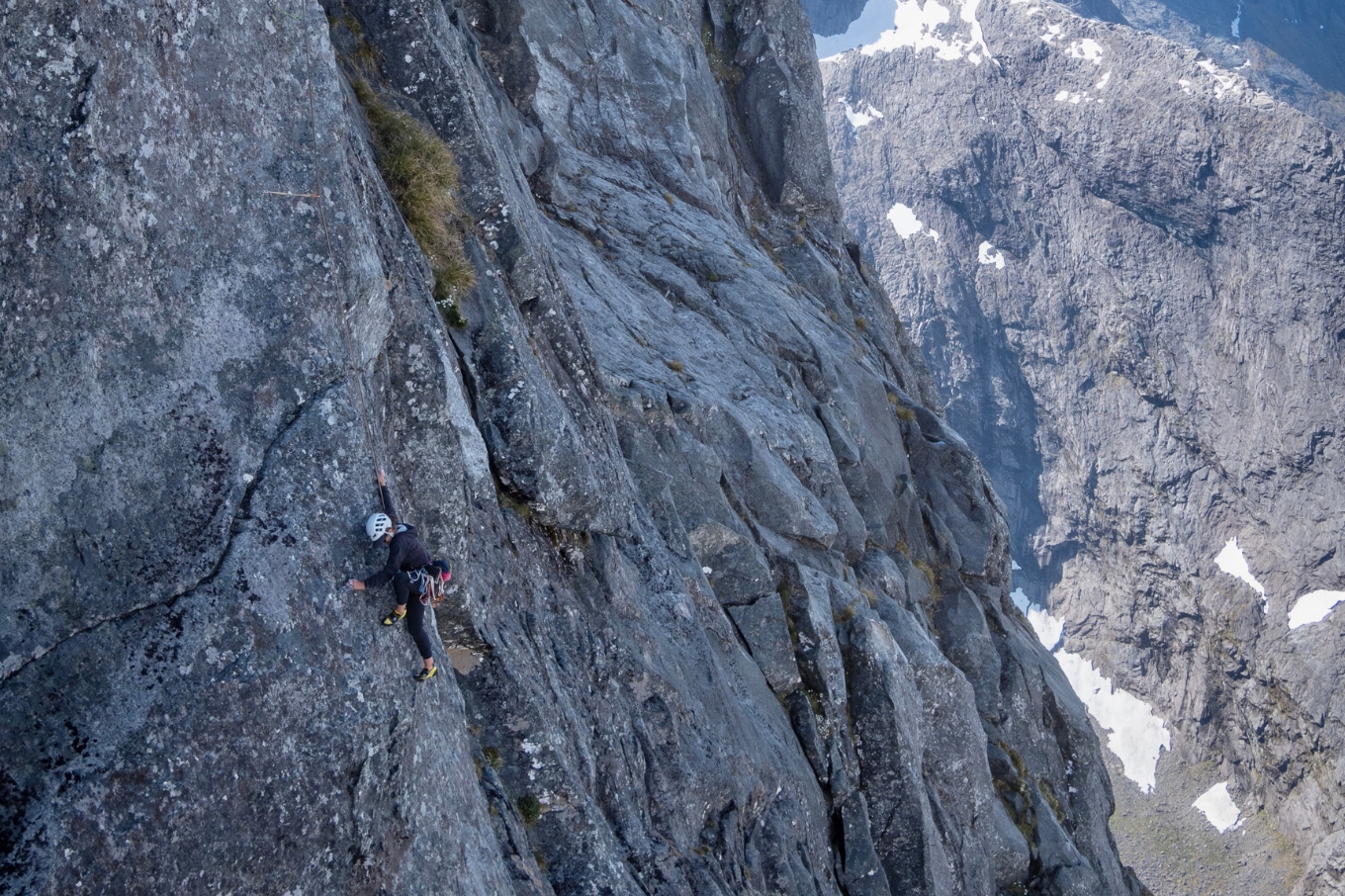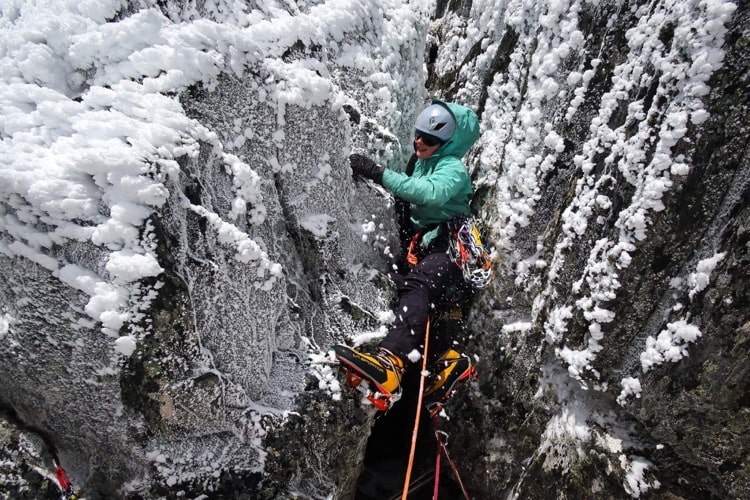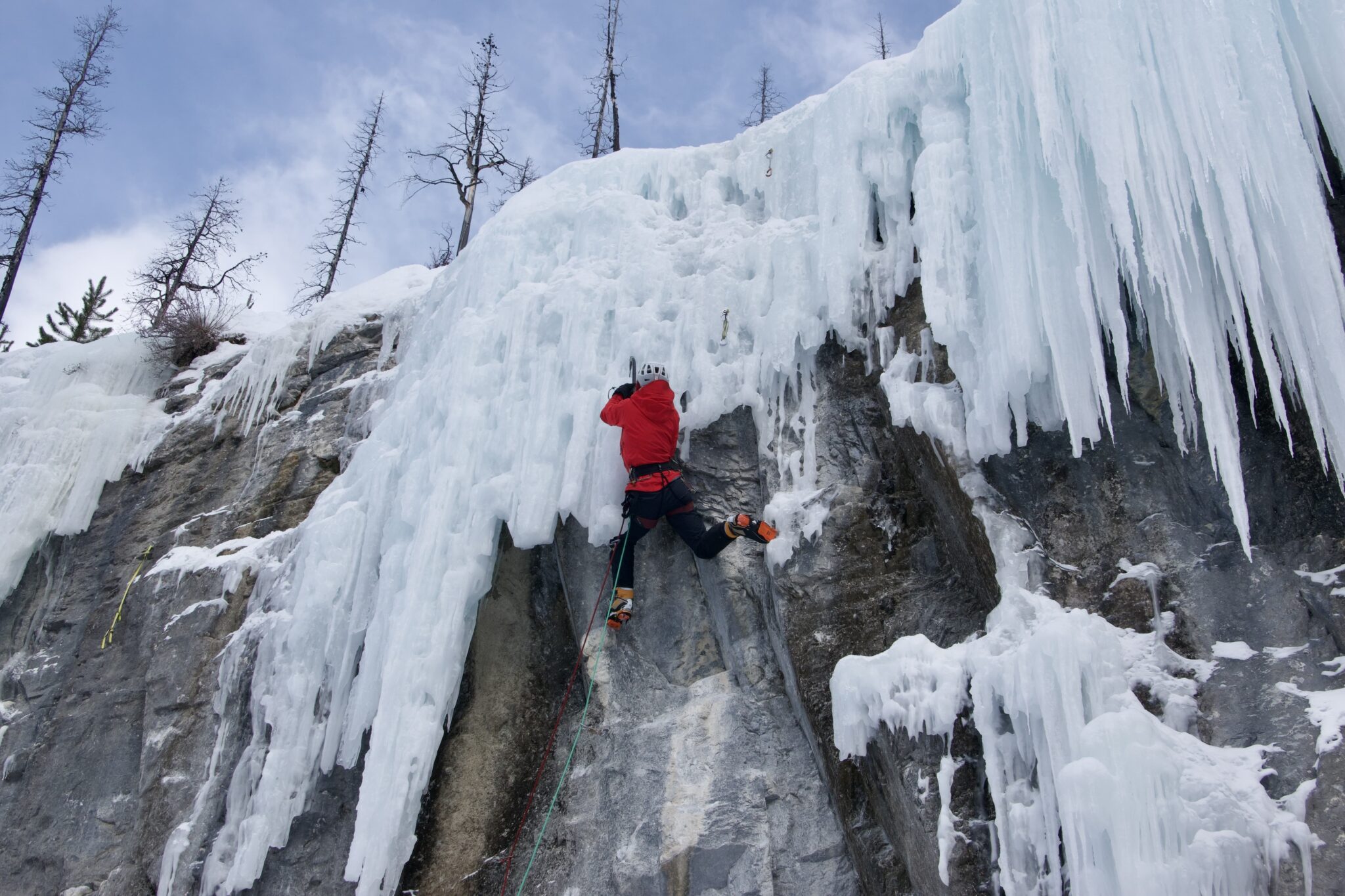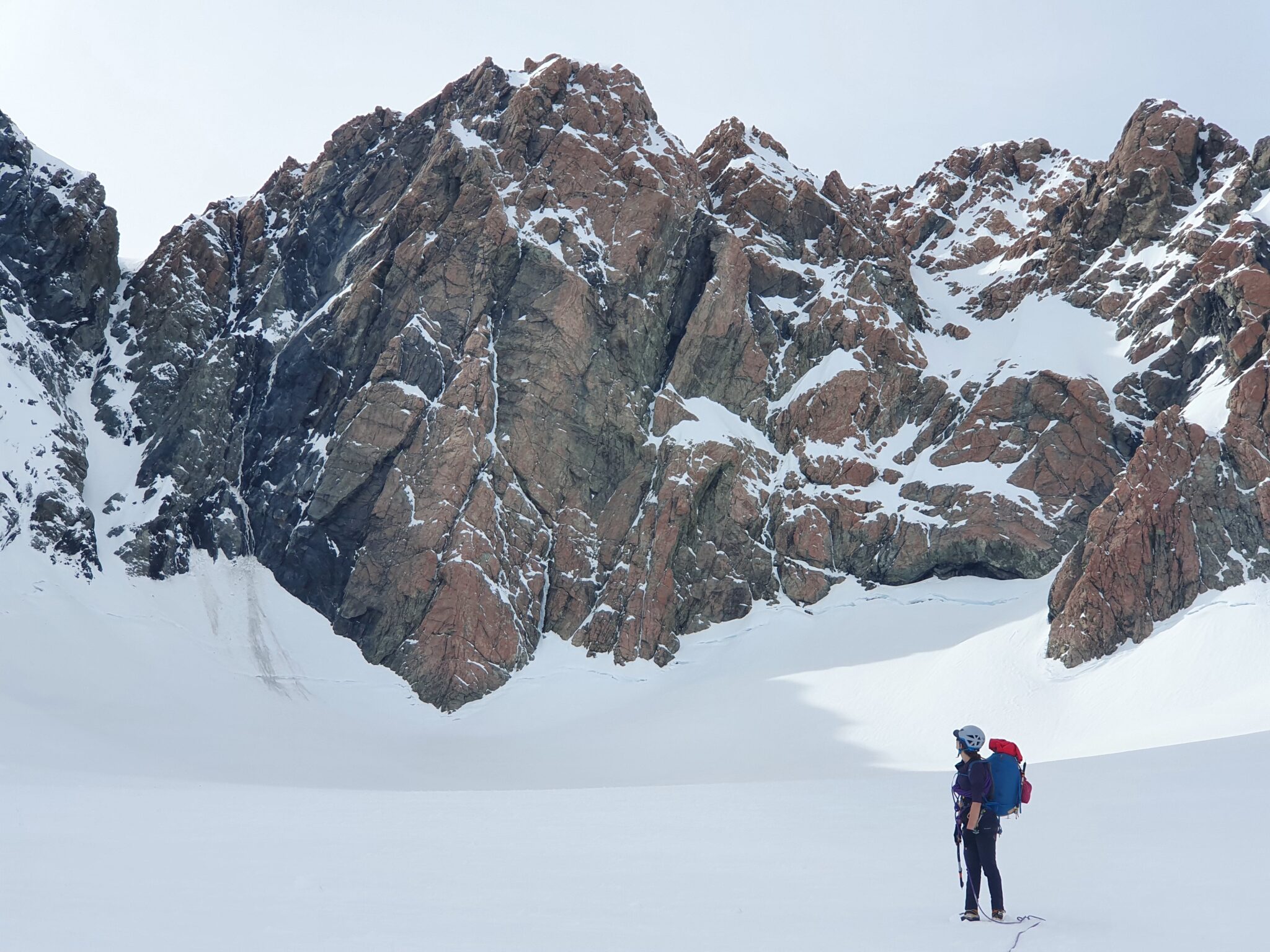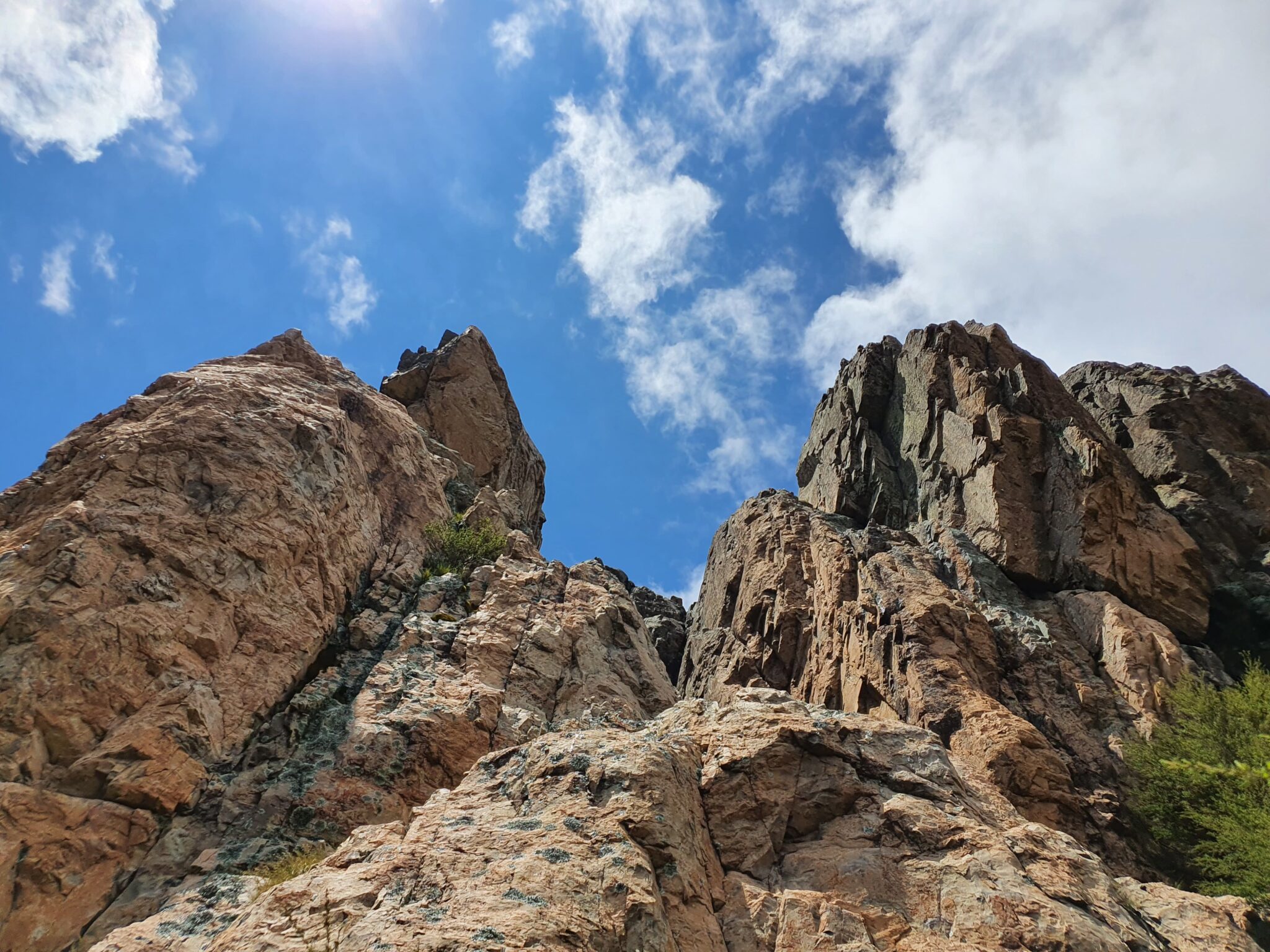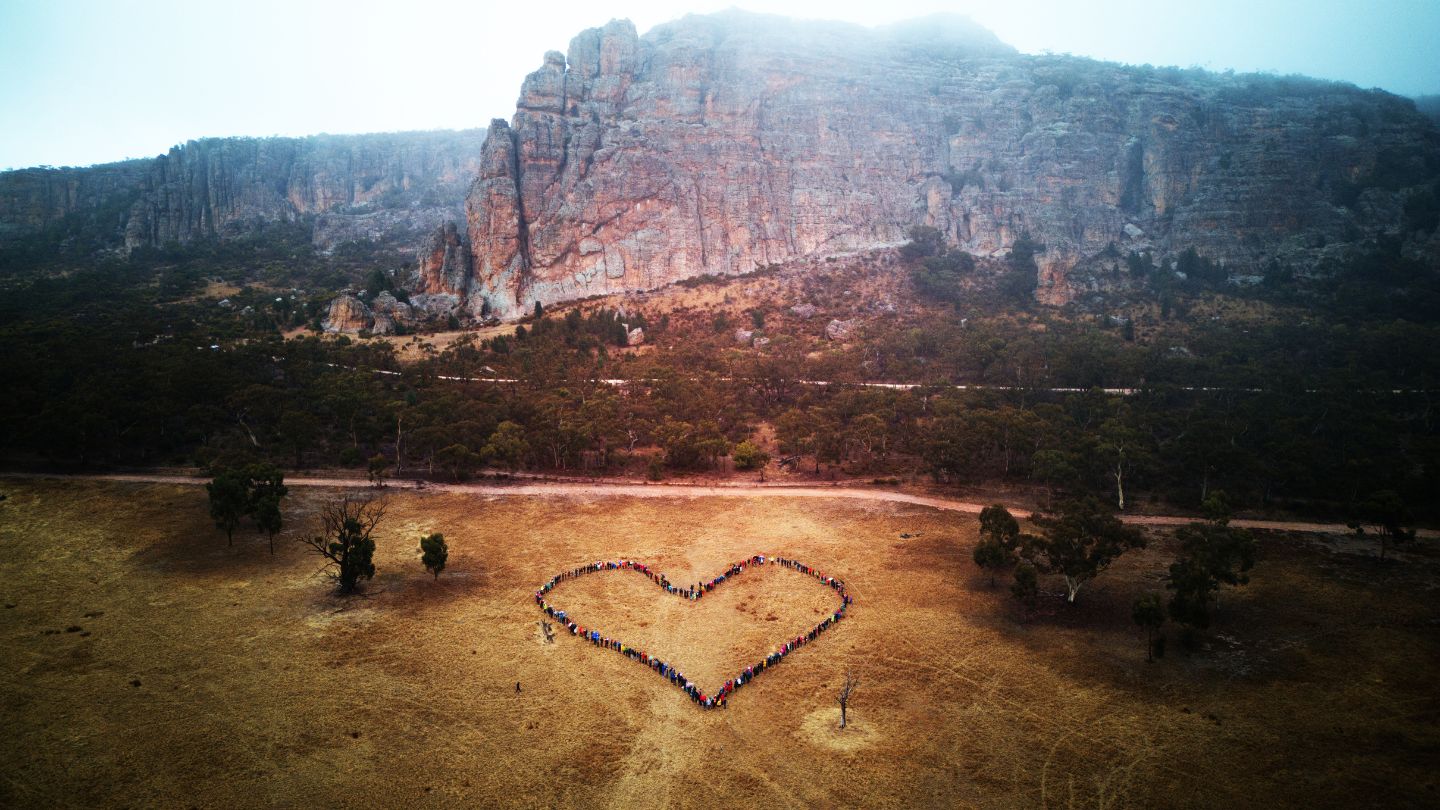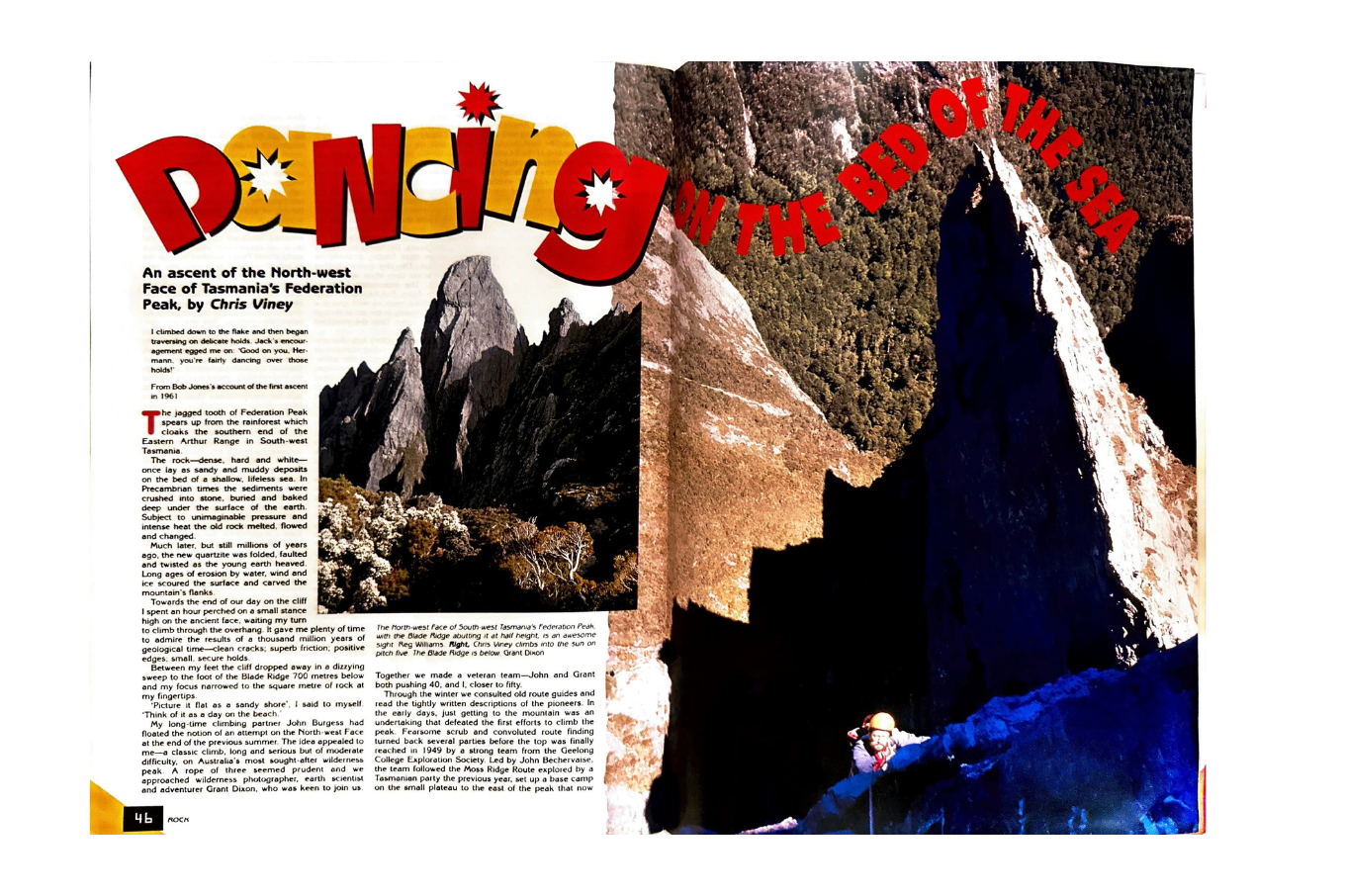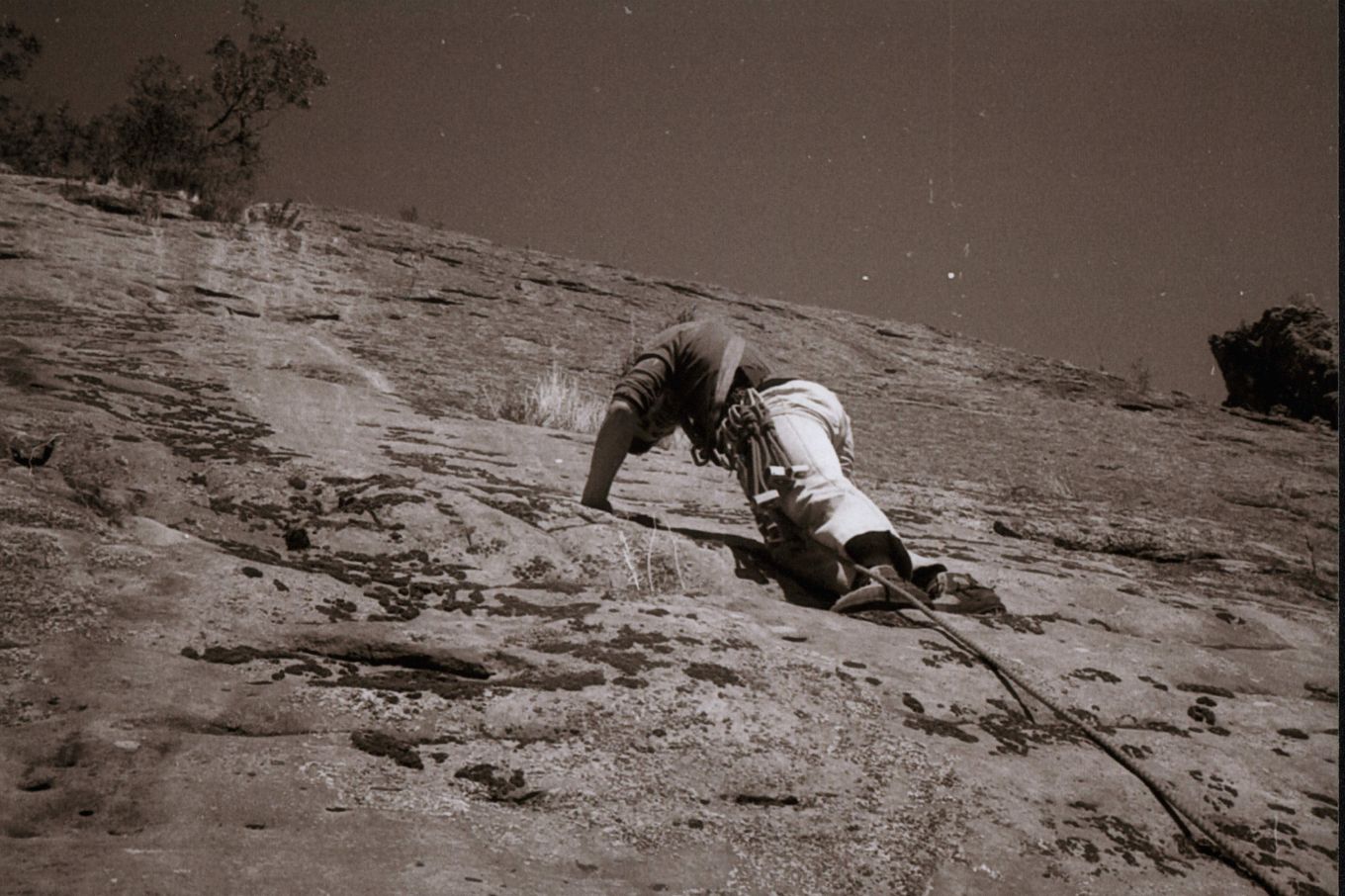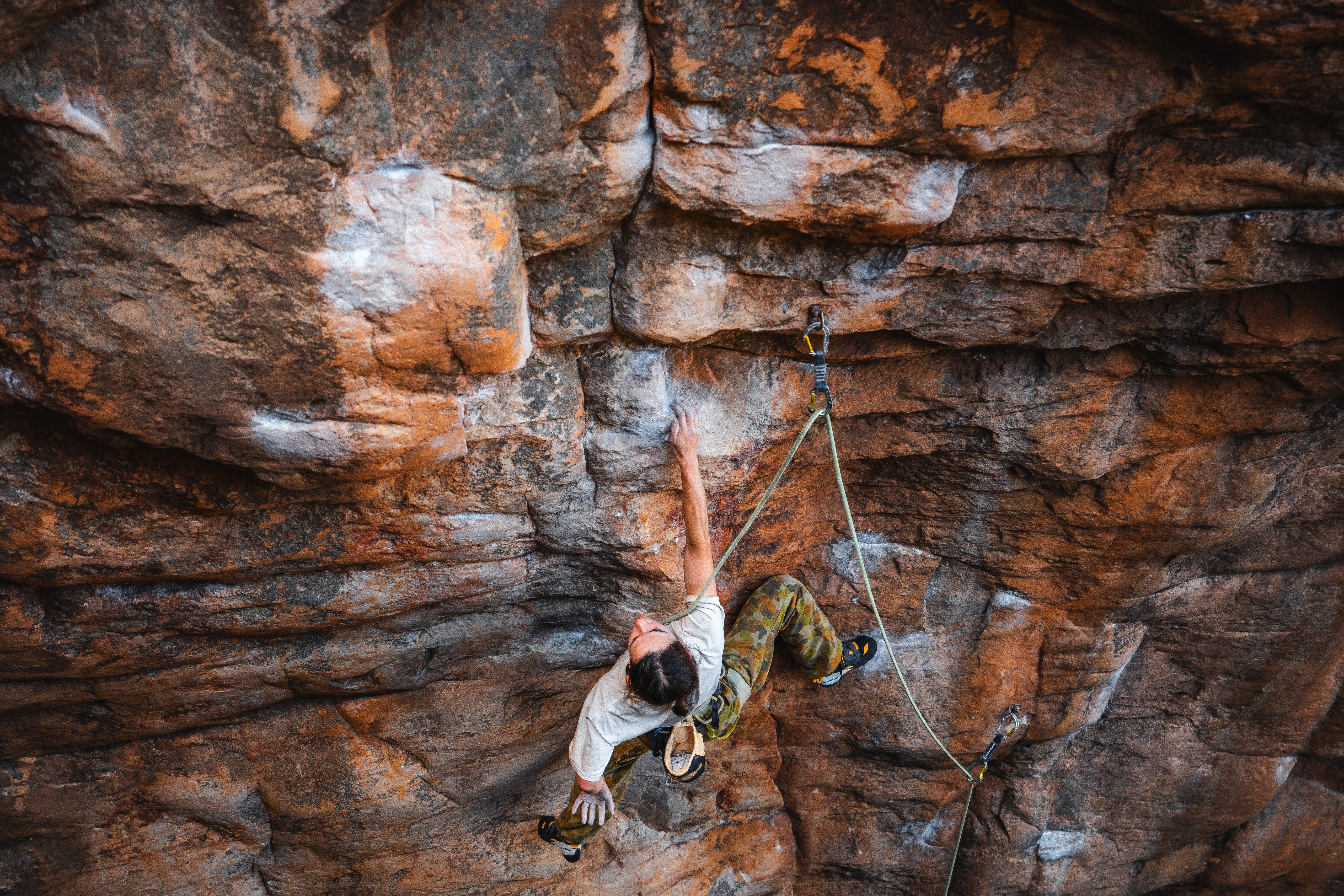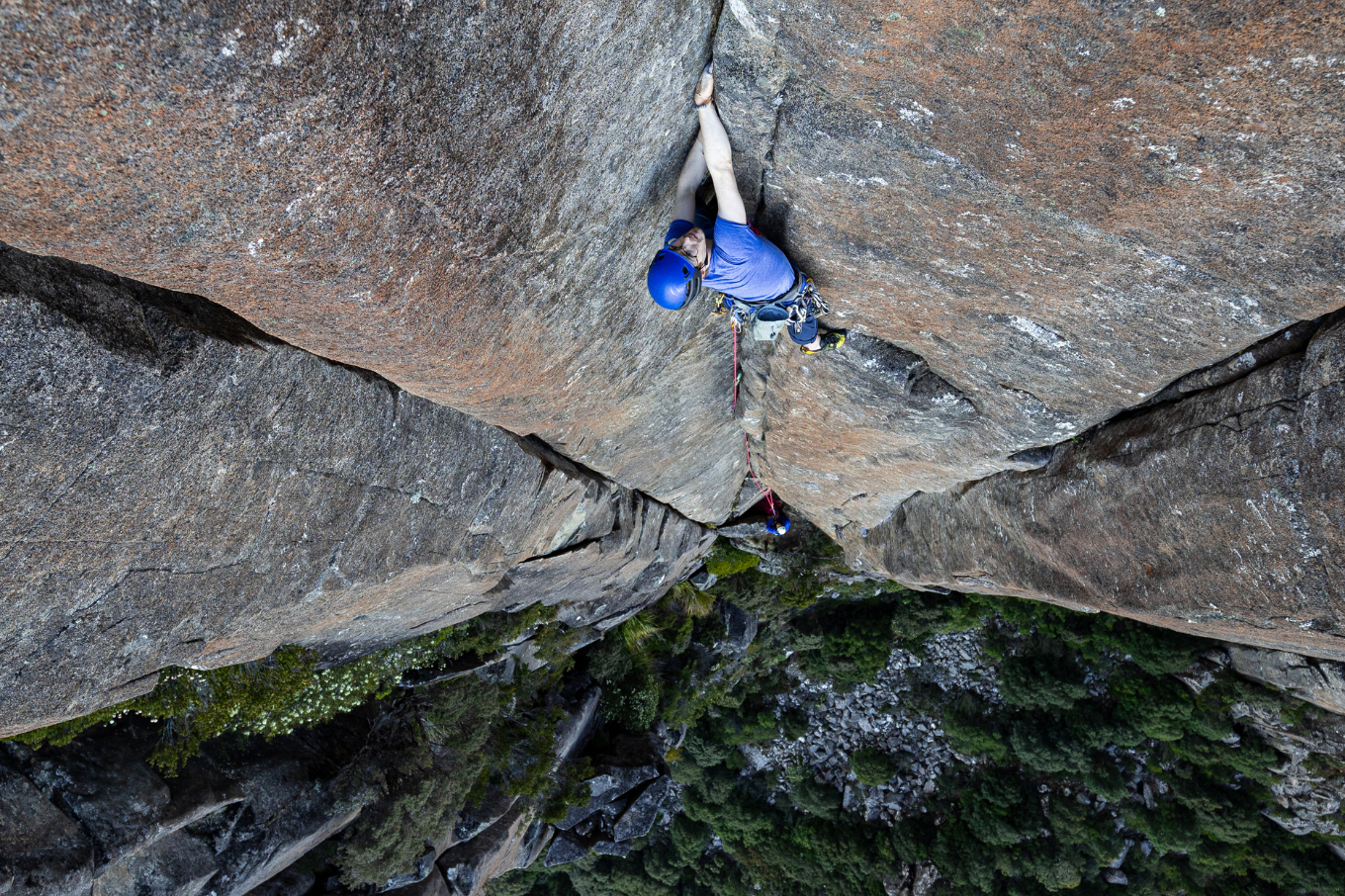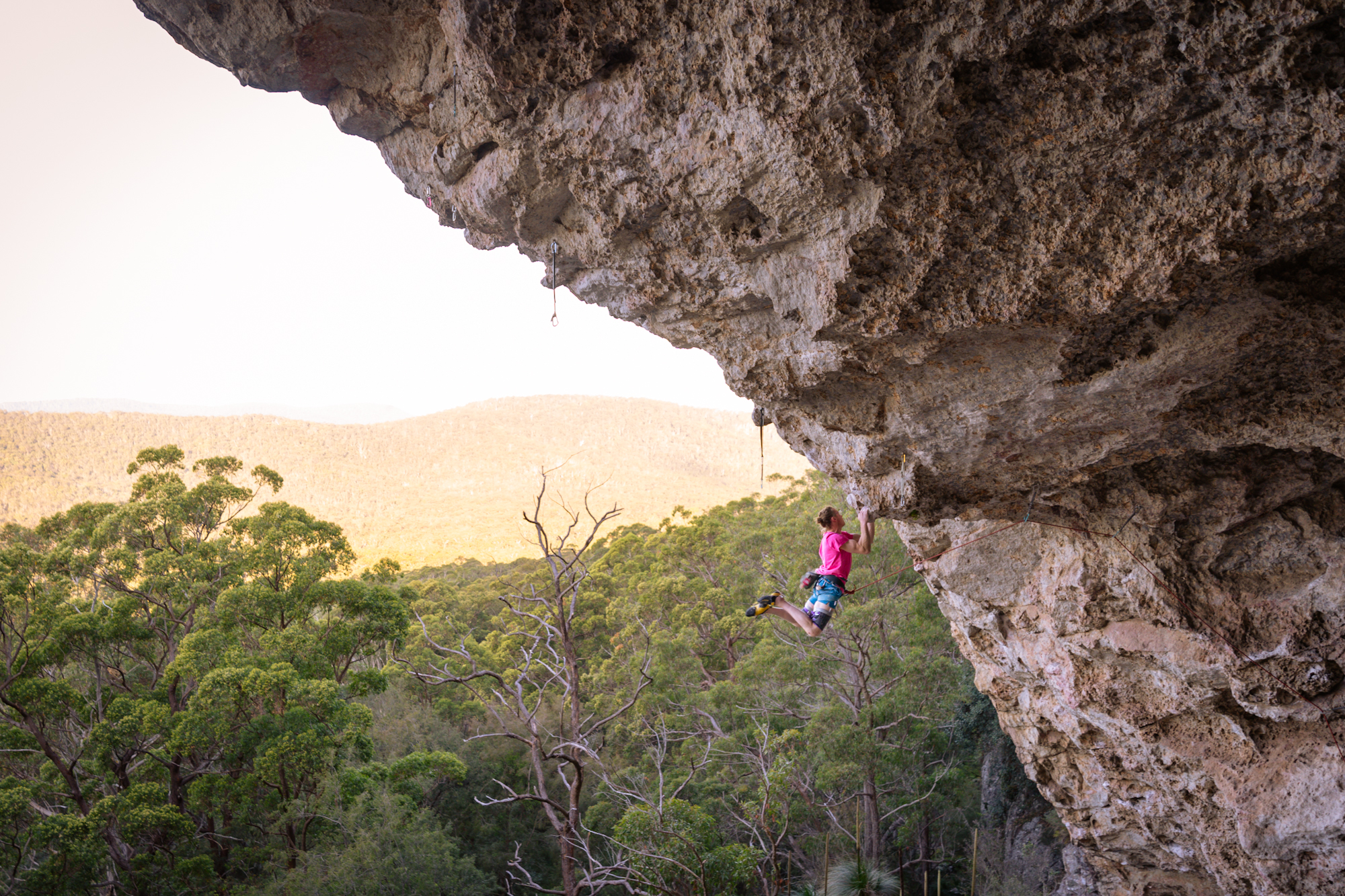Getting to Know Maddy Whittaker
Maddy Whittaker (she/her), Dunedin, Otago
Maddy Whittaker discovered the mountains at 17 and launched herself into alpinism with inspirational—and slightly intimidating—passion. Just six years later, she’s undertaking a mentorship with the NZ Alpine Team and has first ascents, a two-month trans-alpine traverse and an award-winning film to her name.
At VL, we had to know more! We caught up with Maddy to hear about how she got to where she is… and what she’s planning next.
First up, tell us about the trans-alpine traverse and what inspired it
One pivotal moment was a trip up Mount French, which is near Mount Aspiring on the Bonar Glacier, right after I had learnt snow craft. When we saw the sunrise over the glacier, I didn’t know I had the capacity to feel so much awe and joy. Coming back and leaving the mountains had always been my least favourite part of the trips I did; this time I thought, “Well, what if I didn’t have to leave?”
Another pivotal moment was when I did my first new route—Mount Joffre, a 450m WI4 ice-route. I was new to ice climbing and I’d only done a few routes on top rope before I jumped on this massive thing. It was a 25-hour day and changed how I saw the mountains. All these faces I’d just brushed over in the past now looked climbable.
Ice-climbing takes an amazing blend of creativity, problem-solving and trusting that you and your partner have all the skills to find your way safely up the mountain. It was addictive and was the start of me wanting to push into more technical climbing.

I also wanted to spend a decent amount of time out in the hills and get to know the NZ Southern Alps really well.
” If you only go out in good weather, that’s only half of it. Going out for months in all weather, you see the mountains on their terms. ”
So my partner Conor Vaessen, our friends Tom Hadley and Tōrea Scott Fyfe, and I picked a line that traversed the spine of the Southern Alps. We only really deviated from that when bad weather forced us to.
And how was it?
It was incredible to thread our way through these places. When you are doing it, you are in awe of what’s around you, but I don’t think I realised how hard some of the stuff was until I got back and looked at the footage. It was such a privilege to journey for so long with such amazing people. It really made me want to protect those places as well.
But it didn’t end the way I wanted it to. I’d started my outdoor journey with the perspective that “the harder something is, the more personal growth I’ll get out of it, so if it’s hard I’ve got to just keep going”. Then on this traverse, I reached a point where I realised that to keep going was no longer the right thing.
I had gotten really sick in 2020, six months before the traverse. I was throwing up multiple times a day and sleeping 17 hours a day. The doctors couldn’t figure it out, but I wanted to do the traverse anyway, so I went with a run-down body. Not absorbing food properly and throwing up constantly takes a physical and mental toll.
Instead of a three-month trip, it became a two-month trip for me. It was hard to put a dream I’d worked towards for such a long time on hold. In the outdoors your performance can be really tied up in your identity too. The Maddy I usually was would thrive in that place, and I didn’t, so I felt a real loss of self.
So instead, you made an award-winning film about the experience? (Maddy’s film about the experience, Traversing the Night, won the best film in the NZ Mountain Film Festival in 2022.)
I had initially thought I would make a film about the four of us doing this cool journey, but when I ended up leaving, it was quite emotional. I came back from the traverse and a lot of people just asked why I finished early instead of saying, “Wow, what an amazing two months!”
After I worked through the emotional side, I decided to make the film. Most of the media out there is all about pushing through when it’s too hard, and I wanted to put an alternative out there. If I had seen something like that or had a role model who had done something like that, I think it would have given me permission to look after myself sooner.
I lost a friend to suicide last year because she didn’t feel she could be open about her struggles, so it ties into that as well. It’s a 40-minute film, and maybe 30 minutes is about the traverse, and 10 minutes is about my mental journey.
Changing my mindset away from objectives and learning to be more gentle with myself has been a challenge. I’ve changed over the last few years to focus more on the person I am in tough situations. Any climb where I have been able to remain positive, determined and kind is something I am proud of. I’ve worked hard to make sure I’m in the mountains because I love it, rather than because I am trying to prove something.

You’re also a member of the NZ Alpine Team mentorship program—what is that exactly?
Every three years the NZ Alpine Team does an intake of three to six people. Its aim is basically to develop the next generation of NZ alpinists and put NZ on the global stage for alpinism. The mentors are hugely experienced and have done expeditions all around the world.
We just spent four weeks climbing in Canada as part of the program. In 2024, we’ll go to Yosemite to up-skill on rock and big walls. Then, in the third year of the mentorship, we will organise our own expedition. My intake is keen to go to Pakistan to bring big walling and alpine skills together.
You have a pretty remarkable day job, too, helping preserve NZ’s stunning natural environment.
I don’t know if you’ve heard of kākāpō? They’re green flightless parrots, and there are just 250 of them left. They’re critically endangered and only live on a couple of islands in New Zealand. My job is to look after them, particularly during breeding seasons, to make sure the chicks survive. So I basically tramp and bush bash for a living on these remote islands.
I work four weeks on at a time, then I have two weeks off and go into the alpine world to pursue my objectives there. I’ve had to refine my training—I use a hangboard on the island. On the islands, I would usually walk 20km a day with a pack and 1000m elevation, so that takes care of cardio.
I get a lot of joy out of being able to notice the small things at work and in the mountains, whether it’s the forest sparkling, the penguins near my hut or the colour of the ice. I get as excited about the shapes the wind has made in the snow, or the squiggles in the rock, as I do about the actual climb! There’s so much magic to be seen everywhere!
How did mountaineering begin for you?
I had never tramped or done anything outdoorsy before I was 17. Then at the beginning of 2018, I went on Outward Bound. It was a three-week course, and I suddenly realised, “Here’s this entire world that I didn’t know was there!”
Those courses are designed to push you, and the more I was challenged, the more I liked the person I became in that space. I can be a bit of an all-or-nothing person, so it wasn’t like, “I’ll do a couple of trips”. It was, “This will be my life now”.
At university I joined the Otago Uni Tramping Club (OUTC) and immediately started going on trips with them. I absorbed decision-making and technical skills that would take years to accumulate if I was only going on courses. Now I’m teaching other people, and the cycle continues. I’ve been mountaineering almost as long as I’ve been tramping. I did two Great Walks, then I did snow craft and went straight into grade 1 and 2 mountains.
I received a Federated Mountain Clubs Youth Expedition Scholarship in my first year of university to walk the South Island section of the Te Araroa (a trail that stretches the length of NZ, north to south). I wanted to see all these places, but I was 17 and didn’t have my driver’s license, so I thought, “I’ll walk between them all”.
I was out for two months, some of it was with people, and some of it was solo. I turned 18 along the way. Not a lot of it was difficult, but I learned about planning, getting comfortable with my routine in the mountains, knowing what gear I liked, and learning how to work with the weather.
That was when I first started to consider something like a trans-alpine traverse. I kept seeing the main divide of NZ in the distance and thinking, “Wow, imagine walking along that”.

Who are you inspired by?
I’m inspired by anyone who throws themselves into what they do with joy. I’m as inspired by someone who’s just got into it and has done their first overnight trip as I am by someone who’s climbed the hardest route in the world. I think if that ever changes, then I’ll be doing something wrong. It’s just about getting out there and having a wonderful frolic in this beautiful world, and the end result of that is kind of irrelevant to a degree.
I love seeing that excitement and empowerment in people’s eyes when they do something they didn’t think they could do! That’s why I enjoy teaching ice-climbing and snowcraft courses. I see myself and those life-changing moments happening for others, and that brings me a lot of joy. I also want to give back and help make climbing accessible to people without a lot of money for expensive courses.
Follow Maddy on Instagram @_m_whittaker or check out her website https://maddywhittaker.smugmug.com/

Pull-out box
Mountaineering hero? Bronwyn Hodgins, a Canadian climber who does lots of Arctic stuff. She climbed on Baffin Island, then pack-rafted out.
Longest day out? This was a 30-hour day on our traverse—not really a day any more. It was very warm so we were running into lots of issues. We reached a high-consequence avalanche slope, and to manage that risk we kept going and went over it through the night.
What food do you miss in the mountains? Fresh stuff! I get back to town and have watermelon.
First adventure you and your now-husband Conor did together? We led an OUTC tramp in Fiordland. It was our first trip in the mountains together, and it was when I first thought, “Oh, maybe I like this guy…”
No #1 spot in NZ for a beginner alpinist? Aspiring National Park—Mt Liverpool, Mt Barff, Mt French, and Aspiring NW Ridge are all amazing, accessible grade 1 to 2 climbs with beautiful scenery.

